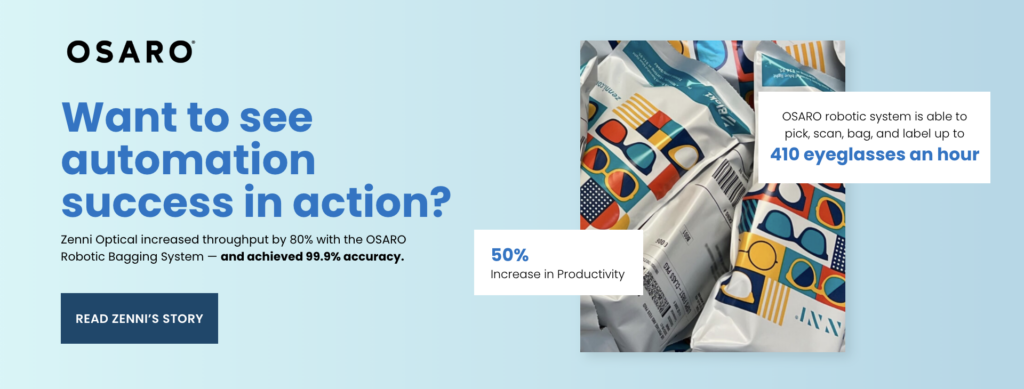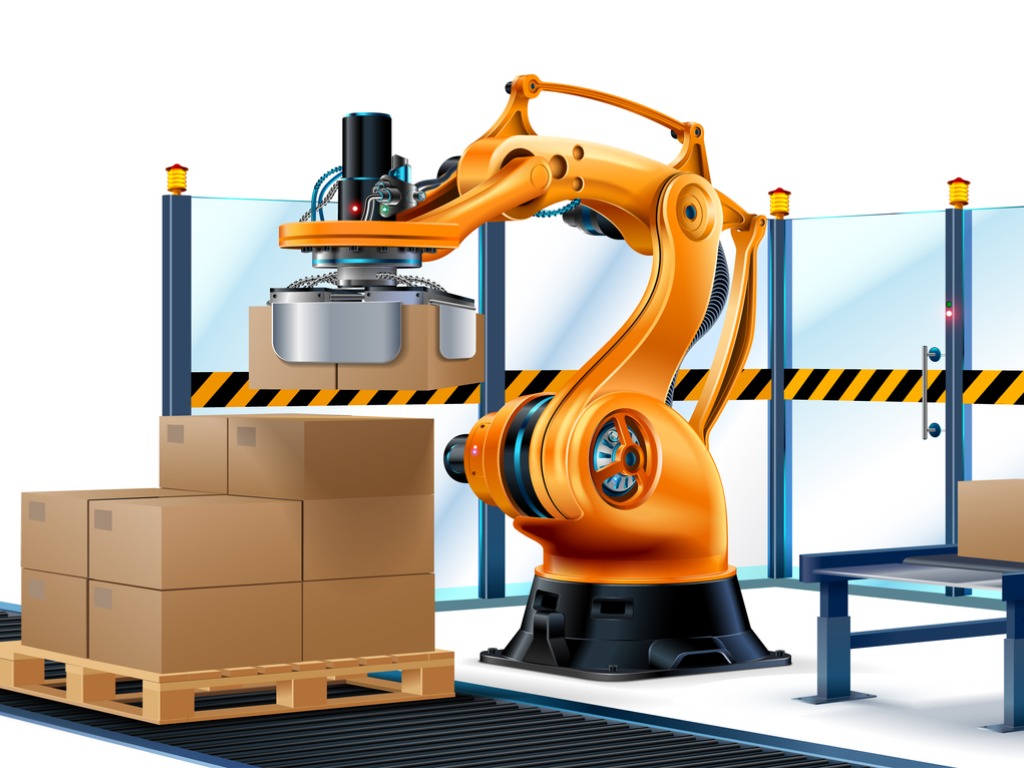
Meet our Expert
Tracy Perdue has 20 years of industry experience working with Dematic, Intelligrated, and Conveyco Technologies, among others. Much of his work has been focused on getting automation right for regional and national 3PLs distributing products for a variety of retailers. Perdue’s self-described approach is ‘Let’s get real.’ He aims to find the right answer to meet a specific situation, not a one-size-fits-all solution. Perdue is currently vice president of sales at OSARO, an AI-driven robotics company that provides piece-picking solutions for e-commerce.
Engaging the C-suite: The case for robotics has never been more important
By Barbara Buell, OSARO Ask an Expert series
Change is critical to delivering ongoing value in the fast-paced e-commerce sector that is plagued by persistent labor shortages. Not investing in new automation technologies like advanced robotics, is a potential risk in itself. Yet, the hardest part of the process is often making the business case internally. A recent Material Handling Institute report found that lack of a clear business case was the #1 barrier to adopting new technologies for supply chain and manufacturing leaders.
Tracy Perdue, who has provided strategic advice to warehouse automation clients for more than 20 years, explains how to take your case for automation to the C-suite.
How can robotics add efficiency to the supply chain where demand for products and delivery speed remain relentless?
Perdue: Advances in artificial intelligence have given robots the ability to “see,” perceive shapes and textures, pick, place, scan, and sort items in a fulfillment warehouse – functions previously only handled by humans. This growing Goods-to-Robot (GTR) segment of warehouse automation is where the greatest gains in efficiency can now be made. And robots can work multiple shifts to meet seasonal or global increases in processing demand.
How do I make the business case for robotics automation?
Perdue: First, paint the big picture: While there is always risk in deploying complex systems like robotics automation, you should help your C-suite recognize that waiting to invest in robotics is a potential risk. MHI’s 2022 annual industry report found 66% of the more than 1,000 supply chain leaders surveyed planned to adopt new technology over the next five years. Indeed, robotics automation alone, currently in use by 28% of respondents, is expected to reach an adoption level of 79% by 2027.
In addition, chronic warehouse labor shortages – the 3.4% U.S unemployment remains at a 53-year low – along with rising demand for global e-commerce distribution make investment in robotics a strategic imperative.
Next, take three critical steps: Set priorities, assemble data, and manage your stakeholders.
Which stakeholders should be involved?
Perdue: First, talk to your distribution center or warehouse team. Besides the C-suite that will authorize the spending, they are key stakeholders. They know what happens on the floor and what is working and what isn’t. Get their recommendations on where the biggest gains in efficiency can be made on the floor. Find out what your current KPIs are – processing and delivery speed, completion/error rates, safety incidents, and labor turnover rates in the Goods-to-Person (GTP)areas of the warehouse. Bring the data and expected KPIs to your executive team.
How do I manage up to the C-suite to get a budget for robotic automation approved?
Perdue: Your C-suite is interested in ROI.
First, create a presentation that lays out the big picture and then clearly establishes your current situation regarding increased packaging and processing, increased consumer demand for speed, and the persistent labor shortage.
Second, explain the problem you need to solve in your own warehouse. Typically, though it is different for each fulfillment center, some of the biggest future gains can be made in the Goods-to-Robot (GTR) segment where goods previously brought by automated mobile robots (AMRs) to a human for sorting, bagging, or disposition further the downstream can now be handled by a piece-picking robot. From initial assessments you have gathered from a vendor or two, explain the hourly throughput you can expect with robotic services in your particular application, the advantage of a robot that can work 24/7, and outline your labor situation.
Next, it’s prudent to convey that the ROI needs to be looked at over a multi-year horizon, rather than as short-term profitability. They don’t want to be left behind as the industry shifts dramatically to robotic automation over the next several years.
Finally, be sure you propose a budget strategy: you may want to suggest funding that shifts spending to less risky operational costs.
How should I propose financing a complex robotics project?
Perdue: Vendors are increasingly offering Robot-as-a-Service plans (RaaS). This way, you can propose known, fixed expenses that operationalize your costs rather than making costly upfront capital expenditures for equipment – especially when you may want to maintain flexibility over the direction of automation in your particular setting. Another thing to consider is a yearly RaaS contract versus a multi-year contract. The latter will protect you from inflation.




